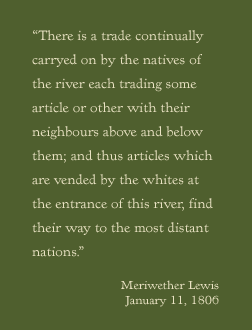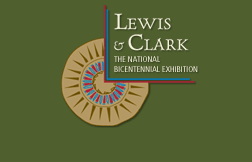
 |
Lesson Plan 5: How to Establish Successful Trade OBJECTIVES Students will:
MATERIALS
BACKGROUND Lewis was harsh about coastal Indian trading habits. He wrote, "They are great higlers in trade and if they conceive you anxious to purchase will be a whole day bargaining for a handfull of roots ;� they invariably refuse the price first offered them�.I therefore believe this trait in their character proceeds from an avaricious all grasping disposition." What he didn't understand was that trade occupied a different role in Indian society than it did in his own. To him, trade was an impersonal exchange of goods, something he did to meet material needs. To Indians, trade was a relationship. The goods expressed the participants' feelings, their character, and their roles in the community. Different rules applied to trade with friends and trade with non-friends. Friendly trade was based on generosity. But in trade with non-friends, the relationship was competitive and adversarial, and the object was to win. It was a kind of game. Lewis and Clark had gotten themselves labeled as non-friends. The Clatsop wanted to sound out a trading partner, learn his character, and build friendship or kinship. The captains were too impatient for such time-consuming interaction. Goodwill and a good reputation were not the sorts of capital their commerce hinged on. OPENING If you have something to sell and I have enough money to buy it, is that all that's necessary for a successful trade? Was that true of American Indian trade? PROCEDURE
CLOSING Using a Venn diagram, compare and contrast American Indian and American trading practices.
|
|||||||
 |
 |
 |
 |
